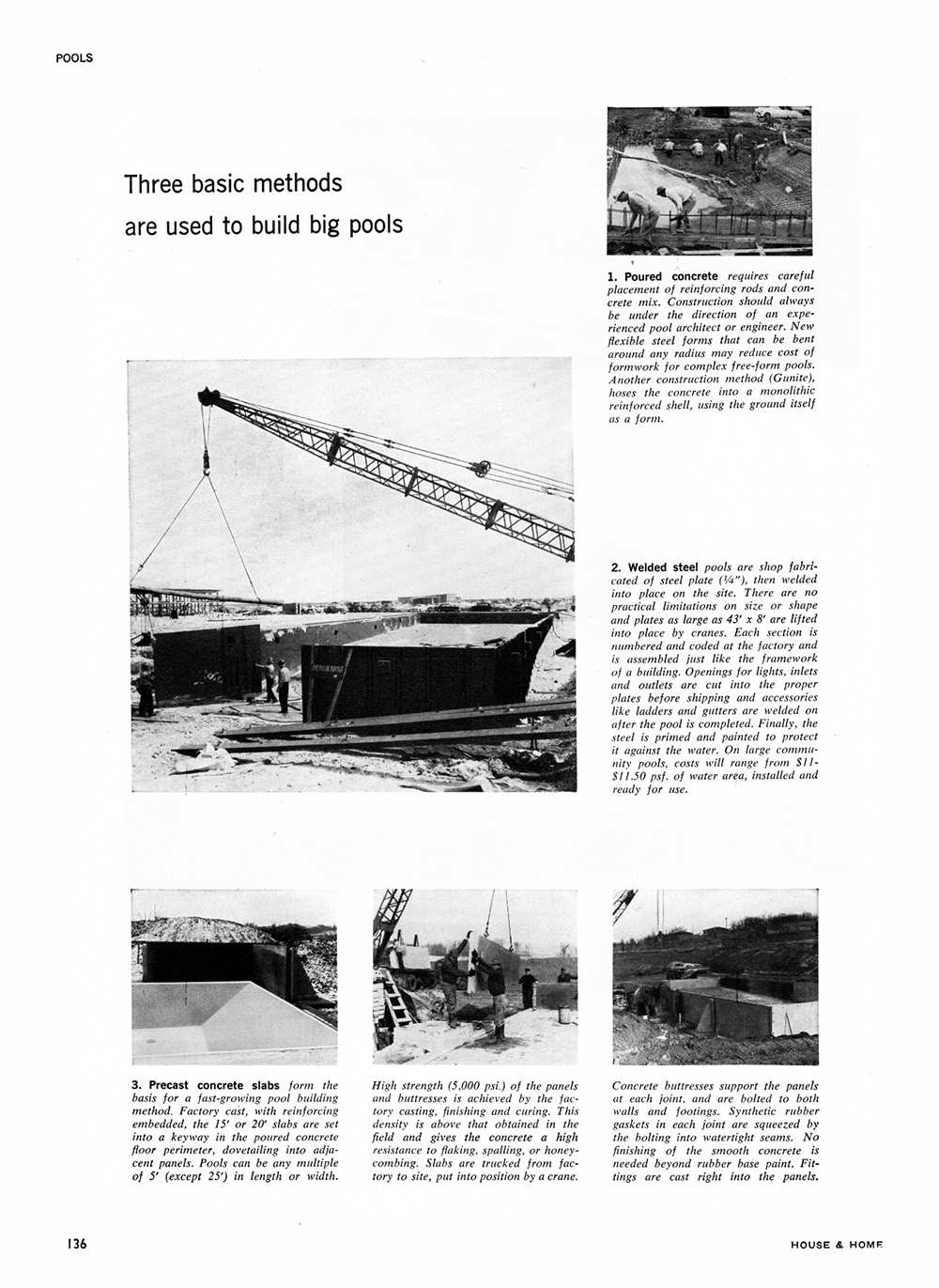


Three basic methods are used to build big pools
1. Poured concrete requires careful placement of reinforcing rods and concrete mix. Construction should always be under the direction of an experienced pool architect or engineer. New flexible steel forms that can be bent around any radius may reduce cost of formwork for complex free-form pools. Another construction method (Gunite), hoses the concrete into a monolithic reinforced shell, using the ground itself as a form.
2. Welded steel pools are shop fabricated of steel plate (¼"), then welded into place on the site. There are no practical limitations on size or shape and plates as large as 43' x 8' are lifted into place by cranes. Each section is numbered and coded at the factory and is assembled just like the framework of a building. Openings for lights, inlets and outlets are cut into the proper plates before shipping and accessories like ladders and gutters are welded on after the pool is completed. Finally, the steel is primed and painted to protect it against the water. On large community pools, costs will range from $11-$ 11.50 psf. of water area, installed and ready for use.
3. Precast concrete slabs form the basis for a fast-growing pool building method. Factory cast, with reinforcing embedded, the 15' or 20' slabs are set into a keyway in the poured concrete floor perimeter, dovetailing into adjacent panels. Pools can be any multiple of 5' (except 25') in length or width.
High strength (5,000 psi.) of the panels and buttresses is achieved by the factory casting, finishing and curing. This density is above that obtained in the field and gives the concrete a high resistance to flaking, spalling, or honeycombing. Slabs are trucked from factory to site, put into position by a crane.
Concrete buttresses support the panels at each joint, and are bolted to both walls and footings. Synthetic rubber gaskets in each joint are squeezed by the bolting into watertight seams. No finishing of the smooth concrete is needed beyond rubber base paint. Fittings are cast right into the panels.